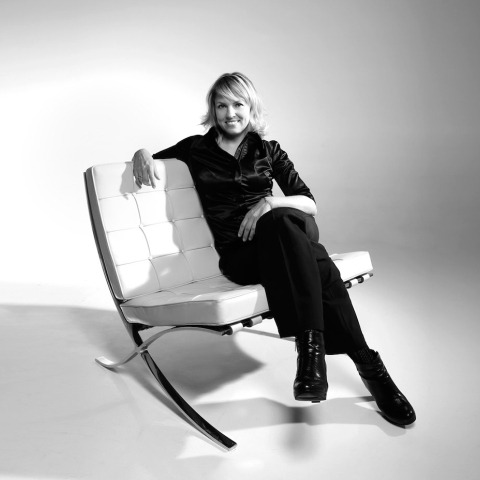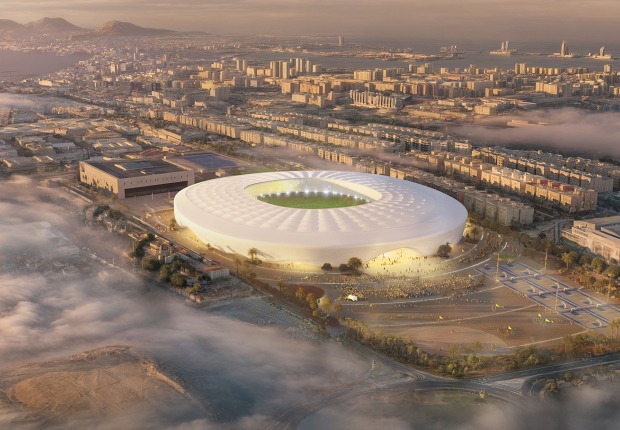Interview courtesy of Beyond Building Barcelona CONSTRUMAT
The architect Giovanna Carnevali (Milan 1974) has been director of the Mies van der Rohe Foundation since 2012. From its headquarters in the restored pavilion (in 1986) that the German architect designed for the 1929 Barcelona International Exhibition, the Mies van der Rohe Foundation has devoted itself for more than three decades to fostering public debate on and awareness of contemporary architecture and urban planning, as well as encouraging studies on the work of Ludwig Mies van der Rohe and the Modern Movement. Since 1988, it has organised the European Union Prize for Contemporary Architecture – Mies van der Rohe Award, one of Europe's most respected architectural awards.
The Mies Foundation is a partner in this year's BBB Construmat. What do you think about this involvement?
G.C.- It is a very active involvement. We think that the new vision implemented in this year's Construmat is both much needed and a big step in the right direction. It goes far beyond construction conceived as building processes basically related with new technologies. Currently, there is considerable interest in urban innovation, public spaces, public welfare, resource management in the field of cooperation and development, renovation and reflection on the latest trends and innovations in the industry.
It can be said that BBB Construmat and the Foundation are following a parallel process in their new visions. We are interested in supporting the exhibition because, in a way, it mirrors or, perhaps I should say, reflects the current state of society and its needs as seen through the prism of construction. In the same way, the Mies van der Rohe Foundation, through the European Union Prize for Contemporary Architecture – Mies van der Rohe Award, mirrors the transformation of modern society through contemporary architectural output in Europe.
The Foundation contributes to BBB Construmat's vision through the joint invitation extended to architects selected in this year's award to share their professional experience with other building professionals and also through the joint organisation of a joint presentation by an (internationally acknowledged) architect and a professional (who is well known in ceramics for his research in technologies) so that they can explain and share their creative visions for our industry at an event that will be held in the Pavilion on 20 May at 7.30 pm.
The exhibition is considering a change of focus this year, intended to identify and give visibility to trends that will bring about a change of paradigm in construction, approached from innovation, renovation, design and sustainability. Do you think, in a general sense, that the industry needs this new model if it is to maintain its importance in the future?
G.C.- I would say that this is absolutely imperative. Rather than say that the industry needs this new model to maintain its importance, I would say that it is the Construction Show that needs to constantly reinvent itself to stay at the forefront of the changes and trends that are emerging all the time. The construction world itself is evolving continuously, driven by the socioeconomic and also the political needs of cities and society as a whole. The Construction Show is the only place where these changes can be showcased.

Mies van der Rohe Pavilion. Photograph © Rafa Vargas.
Do innovation, renovation, sustainability and design represent the key concepts around which this change must articulated?
G.C.- Yes, they do. They are themes that represent the driving force in construction. That's the way it is been throughout history. However, what matters most today, in my opinion, is how we should approach the issues of innovation and sustainability; these should not be the ultimate goals of the project but a concept that forms part of the process itself and integrated in its design. It is precisely here where construction shows have a vital role to play, in understanding this 'how'. And, consequently, it is vitally important to understand these shows' vision and focus.
What role should architects play in this new scenario?
G.C.- Looking at the history of the works selected as finalists for the 2015 European Union Prize for Contemporary Architecture – Mies van der Rohe Award, the conclusion is that architects must increasingly play a role of facilitators and communicators that 15 or 20 years ago was not necessary. The economic recession that has affected Europe since 2007 (if we consider that it started with the financial crisis in Iceland) has severely curtailed public and public-private sector projects.
The architect has had to adapt to this new situation and, in many cases, become a facilitator of solutions and agreements between the different stakeholders so that projects can see the light of day. The situation today is much more complex than, for example, when Mies van der Rohe was commissioned to design a building. The terms of negotiations have changed, contemporary society and our cities are now composed of many overlapping layers, with which the architect has to relate.

Mies Foundation Website Features Full Exhibition Materials from “Made In Europe”. Photograph © Italo Rondinella.
What role should an organisation like the Mies van der Rohe Foundation play in developing a new model for the construction industry? And in society's perception of architecture?
G.C.- The Mies van der Rohe Foundation must be a reflection of what is going on in Europe, while at the same time catalysing all the changes that are happening on the continent. It must be the European leader par excellence in contemporary architectural production, not just because it organises the European Award but also in the field of academic research, urban studies laboratory and disciplines that are parallel and complementary to architecture. In order to achieve this mission, we work with the public sector (local council) but also with the private sector (companies interested in developing smart cities, new public space models, social housing, densities, ... etc.). The building industry is an integral part of this production process and the Award must obviously reflect the changes, innovations and building typologies that are taking place in Europe.
This year, the BBB Construmat Show has set itself the goal of working with the largest possible number of players in the industry. What value should working together have in shaping a more or less stable future for the industry?
G.C.- I believe that it is more necessary than ever to pool efforts to achieve a more stable future for this industry. Many projects today are highly complex (large-scale projects with mixed developments such as infrastructures, public spaces, housing, offices, retail premises...) and many players are involved. It has now become a tendency within Europe to call restricted tender bids among different agents working in the industry: architects, engineers, builders, maintenance companies, structures companies, etc. Maximum complicity is also required in order to offer competitive answers and services. The architect is a part of this sum that makes up the totality of agents who can create complex solutions for a complex reality.
One final question: what direction for the industry would you like to see highlighted in this year's BBB Construmat?
G.C.- I think it would be the development of a cooperation process between institutions, professionals and companies in both renovating existing constructions and building new ones. I think that BBB Construmat's approach to renovation, for example, is a very good step. We live in one of the oldest continents and it is not just the historic centres but also the suburbs where building started after the Second World War and are now starting to have quite a respectable age, where buildings can be considered for renovation (of course, so long as their architectural value justifies it).
























